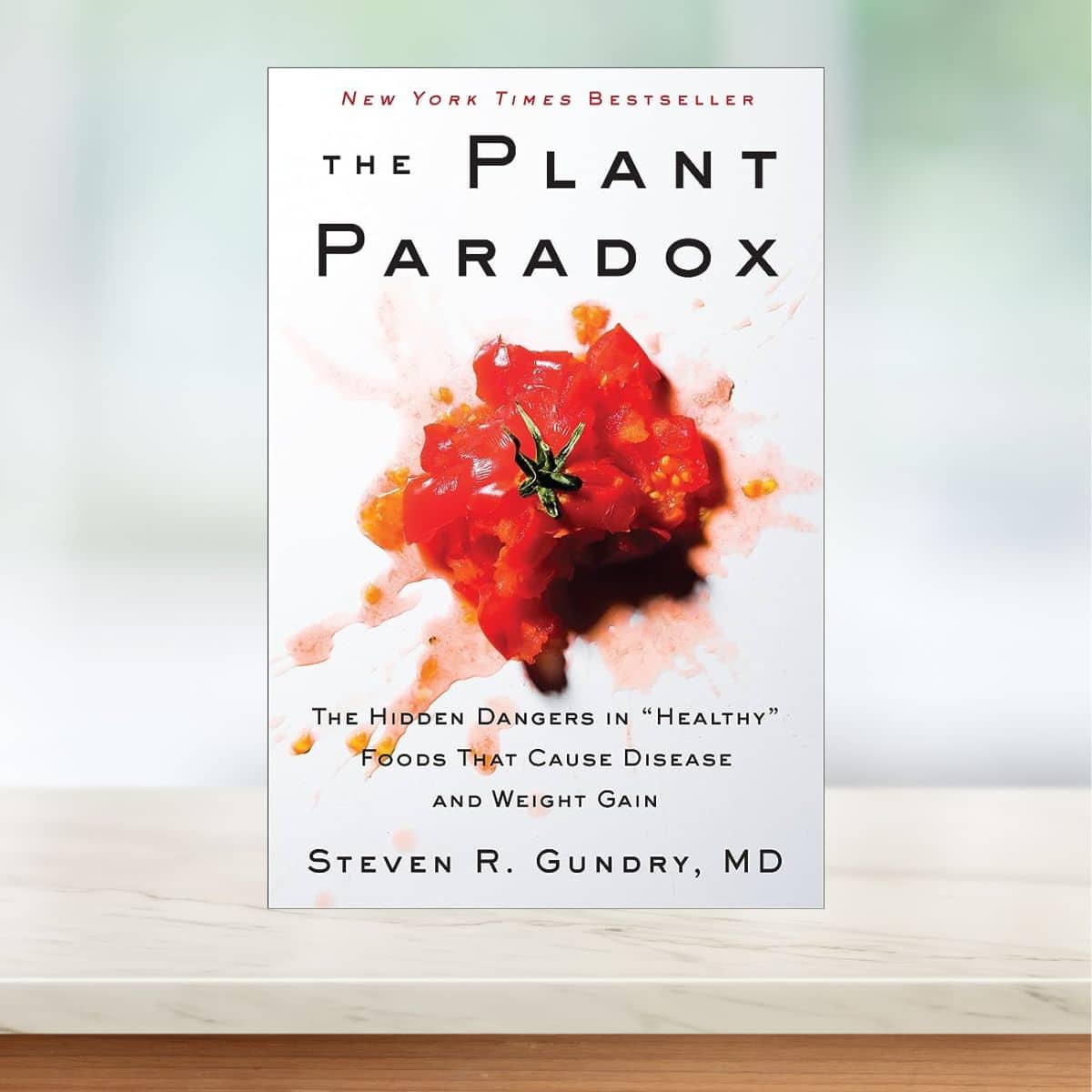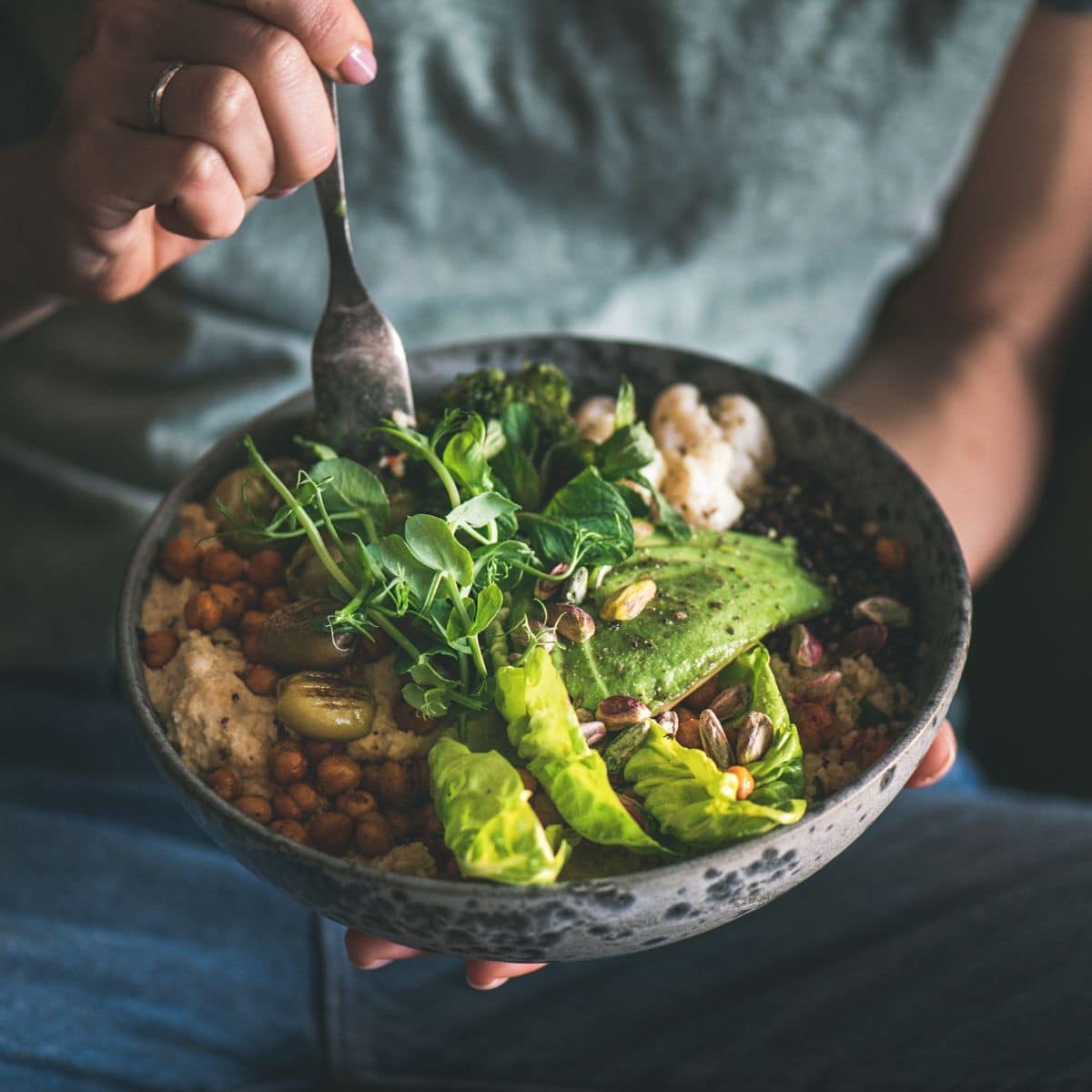

The proliferation of fabricated “facts” and ignored truths is a menace to our society. As others have pointed out, we’ve been living with fake news in consumer-level nutrition messaging for years. It doesn’t matter how many PhDs a person may have—standing in front of the nutrition bookshelf at the bookstore is a sure path to an overwhelming sense of confusion and uncertainty.
A book that has captured public attention for the past few years is The Plant Paradox, by Steven Gundry, MD, focused on the surprising claim that lectins are the source of most, perhaps all human disease. It’s too time consuming to swat away every bit of nonsense that hits the popular media in nutrition, but we’ve been getting a lot of questions about this book and its premise that lectins are the true culprit of our ills.
Dr. Gundry writes on his website, “I believe I’ve discovered some unconventional truths about human nutrition.” Unconventional? Yes. Truths? Not so fast. The Plant Paradox is written by an author who reminds us of his distinguished career in medicine, including his experience in research. Dr. Gundry says, “with all modesty” that he has “found there is a common cause for most health problems” and further that “it is based on ample research, including [his] own papers, published in peer-reviewed medical journals, but that no one has put it all together before.” He goes on to say that so-called “health ‘experts’ have pointed to our laziness, our addiction to fast food” etc., but according to him, “sadly, they are wrong … [and that] … the real cause is so well hidden that you would never have noticed it.”

It sounds like quite a secret uncovered by Dr. Gundry. So, he wants to educate us—but about what? The first hint comes from the book’s title, “The Plant Paradox.” A reader might think, “Aha, perhaps something is wrong with all that whole grain, vegetable nonsense after all! I like this. I knew there was a reason I never liked veggies and why I should instead be eating grass-fed meat! This book is for me!”
But what, specifically, is wrong with plants? According to this book, it’s not only about that awful gluten that we have heard so much about but an entire class of “highly toxic, plant-based proteins called lectins” of which gluten is a member. He says that “lectins are found not only in grains like wheat but also in the ‘gluten-free’ foods like … many fruits, vegetables, nuts, beans and conventional dairy products,” which “many of us regard as healthy.” After consumption, they “incite a kind of chemical warfare in our bodies, causing inflammatory reactions that can lead to weight gain and serious health conditions.”
On pages 68-70, Dr. Gundry offers an enormous list of ailments that have resolved in patients following his lectin-avoidance protocol, including numerous autoimmune diseases, cancer, heart disease and some of its risk factors, weight problems, slow infant growth, mental health problems, and some neurological conditions like Parkinson’s, dementia, and “cramps, tingling, and numbness.” These would be earth-shattering findings.
It’s particularly alarming because these findings contradict well-established observations about diet and health. For one, populations who have transitioned to rich, Western diets generally adopt a diet lower in lectins. A transition to a Western diet is characterized by more meat, more added fats and sugars, and fewer beans and whole grains[1]. One of the commonalities of the blue zones, areas of long-lived populations, is that they consume legumes[2] (and Americans, by and large, don’t). Consumption of beans has been shown to be beneficial for a wide range of diseases, including diabetes[3], heart disease[4], cancer[5], and weight management[6][7] (Dr. Gundry allows vegetarians and vegans to eat beans, but only those that have gone through a pressure cooker; yet so much of the research demonstrating the benefits of consuming beans does not require pressure cookers). Increased whole grain consumption, compared to low whole grain consumption, has been shown to be beneficial for a wide range of chronic diseases, including early death and death from cardiovascular disease[8].
Earth-shattering findings demand extraordinary scientific evidence. It would be nice to see some peer-reviewed science that supports his astounding claims, so we took a peek through the early part of the book to see what kind of references he offers.
His first big claim (pg xv) is that his findings are published in peer-reviewed medical journals. His “peer-reviewed” medical publication cited is an abstract published in the journal supplement for a poster presentation. Making a poster to display at a conference is nice, but this is a world apart from publishing clinical trial results in a peer-reviewed journal. In other words, there is no detailed publication of his methods, his subjects, his results, or his intervention as would be commonly expected in a normal publication. His glowing description of this abstract is misleading, to put it mildly.
It gets worse from there.
Many of his references do not support his statements or are misrepresented.
- Pg 4 – a reference to support a statement about egg yolks and shellfish “dramatically” reducing cholesterol shows that some types of shellfish led to lower cholesterol levels compared to consuming other animal proteins. There’s nothing about egg yolks in the study.
- Pg 21 – The longer you’ve been eating lectins, the longer you’ve been producing gut bacteria to inactivate them, so he says. This seems like a reasonable statement, and quite possibly true, but his supporting citation points to a study that shows that a gluten-free diet leads to less beneficial bacteria and more harmful bacteria. This supports a general contention that food determines gut bacteria, but nothing about lectins specifically. It’s also an odd choice to reference an article that shows that avoiding wheat, barley, and rye leads to more harmful bacteria for a book that is about to recommend that these grains be avoided.
- Pg 24 – “Some lectins disrupt transmissions between your cells…” He references a lengthy paper that offers a review of the workings of a large, complex part of the immune system. Interestingly, the body of the paper does not contain the word “lectin.”
- Pg 38 – “Lectin avoidance… as reported in the scientific literature has been found to cure autoimmune diseases” The reference is for another abstract from a conference, with no possibility of even getting the abstract online. This is scientific literature?
- Pg 43 – Perhaps the most humorous of all the random references comes at the end of a long laundry list of seemingly definitive, alarming claims about what wheat germ agglutinin (WGA) does. There are no references for any claims until the end of this list, where he claims WGA “Contributes to the development of nephritis, or kidney inflammation.” There is a citation for a paper where researchers simply were documenting how some lectins stain kidney tissue. It has absolutely nothing to do with lectins causing nephritis or kidney inflammation. It’s as if the author did a search for the words “lectin” and “kidney” and just randomly picked a paper that popped up.
- Pg 73 – A claim about germ-free mice being shorter and smaller and living shorter lives points to a reference that shows that low-fiber (and presumably lower lectin) diets deplete the diversity of the microbiome over several generations. Not only is the reference not at all supportive of his claim, but it also suggests that if people follow his diet, they may harm themselves.
These are just a few examples from the first couple of chapters. What makes this particularly insulting is that this author is a highly credentialed biomedical professional. Surely he should know what a reference should be and what counts as robust “scientific literature.” How then can he reference his claims so poorly? This has got to be either willful negligence or astonishing incompetence.
Even more egregious are the wild claims he makes with no referencing at all, which is most of the text. There are some rather random inaccuracies. Sometimes it almost seems like this author is just making things up that sound good.
- Pg 12 – “Nightshades are highly inflammatory.” Really? That kind of statement should have some evidence to back it up, because there is plenty of research that suggests, for example, that tomatoes are highly anti-inflammatory[9].
- Pg 28 – “Up until 10,000 years ago, the average human stood about 6 feet tall.” Really? This appears to be patently false[10], with the average human (both men and women) probably being around 5’6”.
- Pg 31 – There’s a claim that Egyptian mummies died overweight, with clogged arteries and diabetes. And the author insinuates this to be from grains. Really? Is it possible that these mummified rulers lived like all the other kings and queens through all of time, eating not like the peasant commoner but the wealthy elite, mostly gorging on animal foods and available processed foods (added fats, added sugars) that were available at the time?
- Pg 33 – The author writes that 500 years ago explorers brought back from the “New World” foods that Europeans, Asians, or Africans had never seen, including grains and beans. What? This is just a bizarre claim. Do you know what Roman gladiators of 1800 years ago were called? “Barley Men” – because they were known to eat wheat, barley, and beans[11].
- Pg 55 – Most of his stage 3 and stage 4 cancer patients got better. Wow. And not a single publication, or case study?
The claims come fast and furious in this book, stated with a degree of certainty, without nuance, that undoubtedly appeals to many readers. But the referencing is so lacking and sloppy that Dr. Gundry should be embarrassed. The references that are cited in this book do a poor job of trying to justify its claims. And the bulk of the author’s wild claims lacks references at all, with several examples of easily verifiable falsehoods. Because his claims are quite profound and novel, referencing the findings of others and his own results are especially important. This is especially troubling for an author who touts his own research experience.

Another method to determine the veracity of a popular nutrition book is to assess how well the author understands and discusses the success of the whole food, plant-based diets as documented in the (real, peer-reviewed) literature, given that this approach is, still today, the only diet ever shown to reverse atherosclerosis. On page 154 he mentions Drs. Ornish, Esselstyn, and myself (T. Colin Campbell), saying that he’s seen our patients and though they lost weight, they failed to halt the progression of their coronary artery disease.
Yet there are several papers in excellent journals demonstrating the success of Dr. Ornish and Esselstyn in halting and even reversing coronary artery disease. These are actual, full papers, by the way, not conference poster abstracts published in journal supplements. He says that the reason patients had weight loss success on these plans is that the physicians emphasize organic food (this is false—none of the protocols required people to consume organic foods) and eliminate certain fats (though he is soon going to be encouraging the reader to eat certain other fats). He notes that this type of dietary approach is intolerable and that 50% of the patients in Esselstyn’s original study dropped out. This is another easily verifiable falsehood, indeed a dramatic falsehood. Of the 22 original cases in Esselstyn’s cohort, 5 dropped out in the first two years[12]. Did Dr. Gundry even read these papers? Or did he intentionally distort the results and suggest a false outcome from eating this type of nutrition?
In a later follow-up publication (the kind that Dr. Gundry has never done with his lectin protocol) Esselstyn demonstrated virtual elimination of the recurrence of heart disease among 177 patients who had complied with his advice for the next 2-7 years—only one individual experienced a recurrence (<1%), compared with a recurrence rate of 62% among the 10.7% of patients who failed to follow his advice.[13] Lifetime observational studies with diets low in animal-based protein also are impressively supportive of these findings.
Dr. Gundry falsely claimed that we (and others) “once demonized all fat” but now have come to recognize that “all fat is not the same.” This is a very careless comment—I (T. Colin Campbell) never advocated a no-fat diet; nor am I a physician as he claims. I am an experimental researcher who investigated nutrition at its most fundamental level, namely its biochemical and cellular underpinnings. That evidence and the principles derived therefrom were combined with human observational and intervention studies that helped to explain the more comprehensive relationship of diet and nutrition with disease occurrence.
Finally, Dr. Gundry offers a very detailed list of “yes” and “no” foods based on whether they contain lectins and several stages of dieting that a person must progress through. Grains, beans, and potatoes are to be avoided. Many vegetables (or fruits, botanically speaking) are to be avoided, including peppers, tomatoes, and squashes.
It is no wonder that this lectin theory is now a darling of the paleo, low-carb, “primal” communities. Although Dr. Gundry makes some passing statements about the benefits of a plant-based diet, where are his patients getting their calories from? Can you get 1500 calories from Jerusalem artichokes and bok choy? We dare you to try. The approved foods list is a loaded list of hard-to-find, specialty products, including only pasture-raised poultry and grass-fed and grass-finished beef, specialty non-grain noodles, energy bars, etc. His patients are either consuming lots of animals, dairy, and added fats or they are starving.
Dr. Gundry has not made a convincing argument that lectins as a class are hazardous. First, there are a very large number of lectins; second, they exhibit a variety of functions—some beneficial and some not; and third, these functions constantly vary, depending on nutritional conditions and bodily needs. There is even evidence that some may
Many people desire good health and deserve good information. We resent that they must suffer such poor quality and confusing information under the assumption that it is good science. Is it possible that Dr. Gundry is just out to make a quick buck? He admits that his patients give up to a dozen vials of blood for testing every couple of months at his clinic. Overtesting is common practice in supplement-driven clinics. This extensive testing (which is another topic) is almost always used to demonstrate some type of nutritional pathology, which of course can only be corrected by taking the suggested supplements. And of course, Dr. Gundry sells supplements, including “Lectin Shield” for about $80 a month. According to his website, “This groundbreaking new formula was created to offset the discomforting effects of lectins (proteins commonly found in plants that make them harder to digest). Lectin Shield works to protect your body from a pile-up of lectins and to promote full-body comfort.”
The biggest shame is the resulting confusion among people who buy this story. Many readers will assume that the citations in the text automatically demonstrate scientific validity. The story of lectins and some of the evidence suggestive of harm in some cases will be enough for people to think that all beans, potatoes, and grains are to be avoided. There was a recipe for veggie and tofu stuffed peppers on our website recently, with a commenter responding: “Almost every ingredient is med-high in lectins you might as well eat a hamburger health wise.”
What a shame that this type of unscientific nonsense creates so much unnecessary confusion, with deadly consequences. One could indeed have an interesting discussion about the health effects of lectins, both good and bad, but this book does not provide it. Further, highly replicable and reliable scientific evidence now shows that a diet of whole plant-based foods, as part of a lifestyle of appropriate hydration, physical activity, and outdoor activities maintains and restores health far more profoundly than our contemporary practices. We also know that this evidence challenges our existing system which is too much about commerce and too little about public health. To say that people are confused is an understatement and it is this confusion that invites scams like this book. Also, many want to hear good things about their bad habits. We can only hope that this newly invented fad, based on such unethical and self-serving behavior, will pass quickly.
References
- Zhai FY, Du SF, Wang ZH, Zhang JG, Du WW, Popkin BM. Dynamics of the Chinese diet and the role of urbanicity, 1991-2011. Obes Rev 2014;15 Suppl 1:16-26.
- https://bluezones.com/2016/06/10-things-about-beans/
- Jenkins DJ, Kendall CW, Augustin LS, et al. Effect of legumes as part of a low glycemic index diet on glycemic control and cardiovascular risk factors in type 2 diabetes mellitus: a randomized controlled trial. Arch Intern Med 2012;172:1653-60.
- Bazzano LA, He J, Ogden LG, et al. Legume consumption and risk of coronary heart disease in US men and women: NHANES I Epidemiologic Follow-up Study. Arch Intern Med 2001;161:2573-8.
- Sanchez-Chino X, Jimenez-Martinez C, Davila-Ortiz G, Alvarez-Gonzalez I, Madrigal-Bujaidar E. Nutrient and nonnutrient components of legumes, and its chemopreventive activity: a review. Nutr Cancer 2015;67:401-10.
- Kim SJ, de Souza RJ, Choo VL, et al. Effects of dietary pulse consumption on body weight: a systematic review and meta-analysis of randomized controlled trials. Am J Clin Nutr 2016;103:1213-23.
- Kristensen MD, Bendsen NT, Christensen SM, Astrup A, Raben A. Meals based on vegetable protein sources (beans and peas) are more satiating than meals based on animal protein sources (veal and pork) – a randomized cross-over meal test study. Food Nutr Res 2016;60:32634.
- Zong G, Gao A, Hu FB, Sun Q. Whole Grain Intake and Mortality From All Causes, Cardiovascular Disease, and Cancer: A Meta-Analysis of Prospective Cohort Studies. Circulation 2016;133:2370-80.
- Navarrete S, Alarcon M, Palomo I. Aqueous Extract of Tomato (Solanum lycopersicum L.) and Ferulic Acid Reduce the Expression of TNF-alpha and IL-1beta in LPS-Activated Macrophages. Molecules 2015;20:15319-29.
- https://www.ncbi.nlm.nih.gov/pubmed/17003019
- http://www.bbc.com/news/education-29723384
- Esselstyn CB, Jr., Ellis SG, Medendorp SV, Crowe TD. A strategy to arrest and reverse coronary artery disease: a 5-year longitudinal study of a single physician’s practice. Journal of Family Practice 1995;41:560-8.
- Esselstyn CB, Jr., Gendy G, Doyle J, Golubic M, Roizen M. A Way to Reverse CAD? J Fam Pract 2014;63:356-64b.
- De Mejia EG, Prisecaru VI. Lectins as bioactive plant proteins: a potential in cancer treatment. Crit Rev Food Sci Nutr 2005;45:425-45.
Copyright 2025 Center for Nutrition Studies. All rights reserved.
Deepen Your Knowledge With Our
Plant-Based Nutrition
Certificate
Plant-Based Nutrition Certificate
- 23,000+ students
- 100% online, learn at your own pace
- No prerequisites
- Continuing education credits









